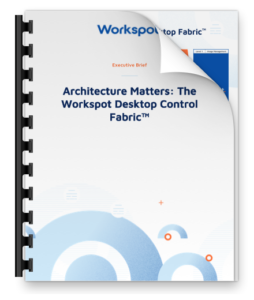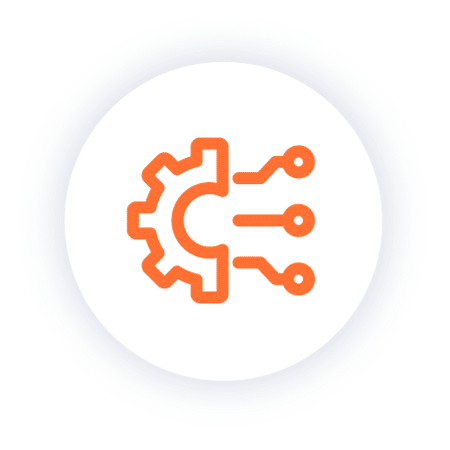Is it Finally Time to Go All-in on the Cloud?
Back in the day, former Microsoft CEO Steve Ballmer recommended that everyone go “all-in” on the cloud. A decade later we’re still not all there yet. Many are still working in a hybrid of on-prem, public cloud, and private cloud. There is a dizzying mass of SaaS, IaaS, PaaS, DRaaS – it’s easier to just say “XaaS.”
The Covid pandemic has undoubtedly accelerated the transition to cloud computing, and the ability to get everyone home to work was made significantly easier where organizations had already transitioned completely or nearly completely to the cloud. To say this has been eye opening for IT and business leaders is an understatement, and as a result, most organizations have spent the last two years making all manner of improvements to their information technology infrastructure.
Where are we in the cloud journey?
One forward-thinking firm that decided to go all-in on the cloud almost eight years ago is the engineering firm of Mead & Hunt. The firm has 900 people, mainly design engineers, working out of 40 locations nationwide. Each year, their CIO Andy Knauf has conducted a survey of more than fifty other CIO friends to gauge how far along they are in their cloud journeys. The majority of the companies surveyed have between 100 and 500 employees, with most having between 6 and 50 locations.
When asked which issues were of greatest concern to them, their top four responses were:
- Security/cybersecurity
- Remote worker access to files
- Hyperscaler cloud infrastructure
- Disaster recovery
You can watch the one-demand webinar where Andy discusses the results when you have a little extra time – it’s well worth it. Even beyond Andy’s survey, in our conversations with organizations of all sizes, these concerns rise to the top of the priority list.
Knauf then asked how many were using Desktop-as-a-Service (DaaS) and 40% said they were. Reasons for not using DaaS included that it was perceived to be too expensive, that performance was inadequate, security was insufficient, or that their users wanted laptops and they wanted control over their own infrastructure.
60% said they had no hyperconverged infrastructure. The majority were using a combination of on-prem and Azure Active Directory. All but a few were currently using some hypervisor for server virtualization.
40% acknowledged that although they were using cloud services, they did not have a “cloud-first” strategy and 70% said that less than two-thirds of their office operation was in the cloud.
Knauf’s analysis is that those he surveyed want and need everything cloud computing can bring them, but the majority are barely underway in their journey to it, making his firm more the exception than the rule.
Where is the disconnect?
Andy Knauf admits he’s puzzled. “If Covid working-from-home didn’t convince you the cloud was the way to go,” he comments, “I’m not sure what it’s gonna take!”
He speaks of a conversation he had a few years ago with his controller who said, following a series of local disasters that included floods, a fire that burned their field office to the ground, and several hurricanes, that their insurance company had asked him how much it would cost to get them up and running in another office space if their current office space was destroyed. Knauf pointed out that he no longer needs to worry about that. “Why is this even a question anymore?” he asked. Mead & Hunt has all their servers up on Azure, not on-premises, and every one of their employees is regularly working from home. Pointing out that Azure keeps their content replicated in multiple data centers, Knauf pointed out, “It’s gonna have to be a pretty bad disaster before we would lose everything.” In this way, the firm has positioned itself well in terms of stronger security, anywhere-productivity, as well as avoiding business disruption. Their cloud-first strategy and methodical execution against it has fulfilled their requirements in the 4 areas the survey revealed as top concerns.
Andy further points out that their company would lose a million dollars every day if their operations were to go down. Now that they are completely deployed in the cloud that should never happen. In the case of a cloud outage, Cloud PCs and cloud workstations can failover to another cloud region and people would continue working. In a more localized event, such as a fire or hurricane, people would simply go back to their home or some other facility that is safe and has network access and electrical power and get back to work. In any case, the business is up and running and people can be productive without any compromises.
Given the compelling success of Mead & Hunt’s cloud journey, Andy’s hope is that it inspires his fellow CIOs to follow suit.
What cloud-first success looks like
Beyond the conversion from on-prem to cloud, Andy Knauf also saw the opportunity to go from capital expenses (CapEx) to operational expense (OpEx) as a huge opportunity for his company. They haven’t purchased a server in four or five years, and they no longer buy high-powered workstations, preferring quality laptops with lower memory and onboard storage requirements. Knauf points out that their people are their biggest and most important investment and providing the tools to keep them working and help them be as productive as possible is what he’s there to do. As Andy Knauf points out, “Productivity pays the bills!” so there can be no performance compromises; the top priority was that with any new technology introduced, end users have to love it.
In 2013 all Mead & Hunt data was migrated to Panzura’s CloudFS file system. This award-winning global cloud file system lets even the largest organizations use the cloud like it’s a high performance, globally available data center, making data accessible and durable. Network core operations were on their way out of their own data center and into the cloud.
Going all-in on Workspot cloud workstations
In 2017 Andy Knauf turned his focus onto his user’s desktops. Many of the engineers had tremendous data compute, storage and transfer requirements and latency was, as always, their biggest drain on precious time. And, they traveled frequently creating a challenge in providing a consistent, quality user experience when people were at job sites or in a hotel and needing to work. Andy freely shares that an on-premises VDI implementation that held so much promise for solving some of these issues simply failed the end user productivity test. Poor performance reduced productivity by at least 20%, – the opposite of what they were trying to achieve – and power users were pretty unhappy with the solution
Andy then discovered Workspot and, in doing so, found a single solution to all these challenges. Workspot introduces a completely new end-user-computing paradigm, utility computing, enabled by its SaaS Cloud PC platform. The underlying architecture of the SaaS solution – the Workspot Desktop Control Fabric™ – is a cloud-native, globally distributed architecture that delivers Cloud PCs and workstations across globally distributed public cloud regions in minutes, while also enforcing Zero Trust Security policy. Today, the public cloud offers each customer the ability to run software in dozens of cloud regions worldwide – essentially every organization now has relatively local access to these data centers, and that’s the key to providing great performance to end users. These cloud regions are also interconnected using the best, fastest, and most reliable networks.
Workspot places Cloud PCs and cloud workstations in the public cloud region nearest to the user, dramatically reducing latency. “As long as you can get low latency,” points out Knauf, “you’re gonna have great performance. We now have a rock-solid system, and we can just plug in people wherever they’re at. I never have to worry about opening new offices. As long as there’s an Azure site within a couple of hundred miles, I’m good to go. And I think there’s more than 60 of them across the globe. So pretty much anywhere on the planet.”
Ready to learn more about how Cloud PCs and workstations are transforming end user computing? Schedule a demo and we’ll show you how it works!




